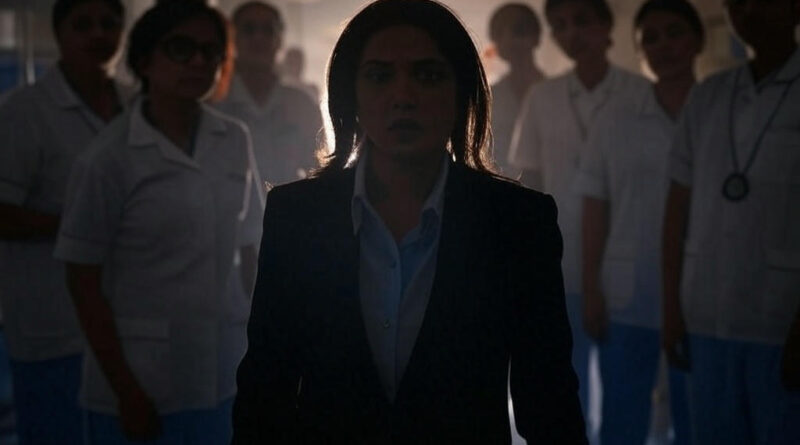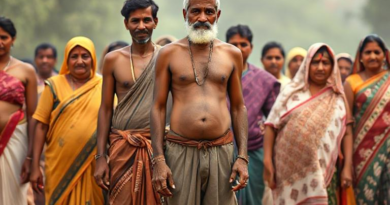The Last Injection: A Story of Loss and the Quest for Medical Reform in India
Dr Meera Sharma (name changed) was a rising star, a 32-year-old assistant professor at a prestigious Indian university, her name was whispered with reverence in the hushed corridors of academia. But beneath her poised exterior lurked a silent predator: hypothyroidism. Diagnosed two years ago, she’d been tethered to a regimen of thyroid injections, a lifeline she accepted with the pragmatism of a scientist and the resignation of a patient. She trusted the system. That trust would kill her.
The disease sapped her energy and dulled her days. Diagnosed two summers past, she bore it with the grace of a warrior, submitting to a rhythm of pills and needles—thyroid injections, precise and regular, like the ticking of a metronome. She thought it was a small surrender for the privilege of her life, her work, her voice.
A Life Cut Short
It was July when the sun pressed down like a tyrant, and the public buses groaned under the weight of too many bodies. Meera boarded one such beast after a day of teaching, her satchel slung over her shoulder, and found a seat by the window. The city blurred past—rickshaws weaving, horns bleating, a kaleidoscope of survival.
Then came the nausea, a sly serpent coiling in her gut. She pressed a hand to her stomach, willing it away—perhaps the heat, she thought, or the hurried lunch of stale roti. But the serpent struck. Her body convulsed, and a flood of blood burst from her mouth, dark and glistening, spilling over her kurta, and pooling on the floor. The bus erupted—screams pierced the air, hands reached out, and some recoiled as if death were contagious. “Help her!” a woman cried, but the driver only swore and swerved, the vehicle a lumbering beast indifferent to its dying passenger.
Meera’s eyes fluttered, her breath a ragged whisper. She slumped against the seat, a fragile figure swallowed by chaos. By the time the bus screeched to a halt outside a hospital, its corridors echoing with the cries of the forgotten, she was gone. Dr. Meera Sharma, a scholar of stories, had become one herself—a tale of blood and betrayal, etched in the memory of strangers.
The doctors, harried and hollow-eyed, pronounced her dead on arrival. The cause, they murmured, was linked to those injections, those supposed lifelines that had turned lethal. A mistake, a misstep, a thread snapped in the fragile tapestry of her care.
A System in Crisis
Meera’s death was no solitary wound; it was a mirror held up to a nation’s ailing soul. India’s medical fraternity, once a beacon of healing, now staggers under its own weight—a colossus crumbling from neglect, greed, and the sheer exhaustion of its keepers. In her story lies a thousand others, unwritten but no less real, buried in the archives of apathy.
The clinic where Meera received her injections was a microcosm of this decay. Understaffed, and overstretched, it was a place where nurses juggled lives like circus performers, their hands trembling with fatigue. The investigation that followed her death—a reluctant peeling back of layers—revealed a fatal error: the dosage miscalculated, a number transposed in haste, a life extinguished by a decimal point. The clinic issued a statement, words polished with regret but hollow of accountability, while Meera’s family drowned in grief and unanswered questions.
This is not an anomaly but a pattern. A 2019 study in the Indian Journal of Medical Ethics whispers a grim truth: 5.2 million injuries each year from medical errors, a silent epidemic eclipsed by the noise of progress. Negligence festers where oversight fails—hospitals overcrowded, doctors overworked, their humanity ground down by a system that demands miracles from the malnourished. In public wards, equipment rusts beside patients who wait for care that never comes; in private towers, profit reigns, and treatments multiply like weeds, choking the poor with bills they cannot pay.
Corruption, too, is a cancer here. Underpaid staff cut corners—substandard drugs slipped into veins, records falsified to shield the guilty. Meera’s case languished in court, a paper ghost among millions, while her students took to the streets, their placards bleeding with her name. They demanded justice, but the system smirked—a labyrinth designed to exhaust, not to heal.
Towards a Better Tomorrow
Yet from the wreckage of Meera’s life, a fragile hope takes root. Her death lit a fuse—her students, those young dreamers she once taught, became warriors in her name. Their protests spilt across Delhi, their voices amplified by the digital wind, reaching ears that had long turned deaf. They asked not just for justice, but for a reckoning—a remaking of a system that kills its own.
The wise ones, those who study the anatomy of failure, offer blueprints for redemption. First, the coffers must open—India spends a mere 1.28% of its wealth on health, a pittance against the world’s measure. More rupees could build hospitals that breathe, hire hands that heal, and train minds to wield science with care. Imagine wards where beds are not battlegrounds, where nurses need not choose who lives and who dies.
Then, the reins must tighten. Regulations, sharp and unyielding, could cage the chaos—independent watchdogs to sniff out negligence, protocols etched in stone to guide every needle, every pill. Accountability must cease to be a whisper and become a roar, a promise that errors will not be buried but faced.
Education, too, is a lantern in this dark. Doctors and nurses, those weary soldiers, need the light of new knowledge—training that evolves with time, not tethered to textbooks yellowed by decades. And within these halls of healing, let transparency bloom—mistakes owned, not hidden, so trust can grow where suspicion now festers.
But the people must rise, too. Patients, long silenced, must learn their power—the right to question, to demand, to report. Meera’s story could be their clarion call, a lesson in vigilance, a shield against the next tragedy.
As the headlines fade, Meera lingers—not in the courtroom, nor the clinic’s cold denial, but in the fire of those she touched. Her students carry her forward, their chants a hymn for a future where no injection becomes a death sentence, where no family mourns a preventable loss. Her life, so briefly radiant, now fuels a quiet revolution—a demand that India’s healers heal themselves.
In the end, Meera Sharma was more than a statistic, more than a fleeting cry on a bus. She was a daughter, a teacher, a dreamer snuffed out by a system too broken to save her. Her death asks us to look, to feel, to act—so that the next story told is not of loss, but of lives reclaimed from the jaws of indifference.
Get updates and read additional stories on the Health Orbit Fan Page.
For Guest posts, Sponsored posts and other details, please click ‘Contact Us’ page.




